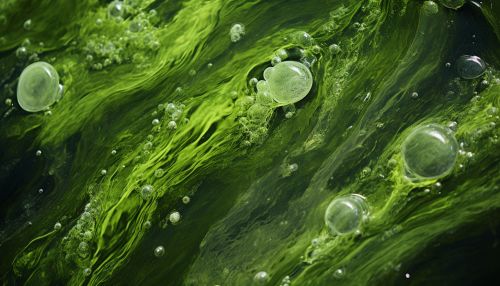The Role of Algal Biotechnology in Carbon Capture
Introduction
Algal biotechnology refers to the use of algae in various technological applications, including carbon capture and sequestration (CCS). Algae, due to their photosynthetic abilities and rapid growth rates, have been identified as potential biological agents for carbon capture. This article explores the role of algal biotechnology in carbon capture, the underlying mechanisms, benefits, challenges, and future prospects.


Algae and Photosynthesis
Algae are photosynthetic organisms that convert carbon dioxide (CO2) into organic compounds using sunlight. This process, known as photosynthesis, is the primary mechanism through which algae capture carbon. Algae can be unicellular or multicellular, and they inhabit diverse environments from marine to freshwater systems. They have a higher photosynthetic efficiency compared to terrestrial plants, which makes them suitable for carbon capture.
Algal Biotechnology and Carbon Capture
Algal biotechnology leverages the natural ability of algae to absorb CO2 during photosynthesis for carbon capture. The captured carbon is then stored in the form of biomass, which can be harvested and processed for various uses such as biofuel production, animal feed, or even sequestered in geological formations.
Mechanism of Carbon Capture
The mechanism of carbon capture in algae involves the uptake of CO2 from the atmosphere or industrial emissions through their photosynthetic apparatus. The CO2 is then fixed into organic compounds in a process known as carbon fixation. The fixed carbon is stored in the algal cells as carbohydrates, lipids, and proteins.
Algal Strains and Carbon Capture Efficiency
Different algal strains have varying efficiencies in carbon capture due to differences in their photosynthetic capabilities. Some strains like Chlorella and Spirulina have been identified as high carbon capturers. Genetic engineering and selective breeding techniques are being used to enhance the carbon capture efficiency of these and other algal strains.
Benefits of Algal Biotechnology in Carbon Capture
Algal biotechnology offers several benefits in carbon capture. These include:
- High carbon capture efficiency: Algae can capture more CO2 per unit area compared to terrestrial plants.
- Dual-use: The captured carbon can be used to produce valuable products like biofuels, thus providing an economic incentive for carbon capture.
- Environmental sustainability: Algae can grow in non-arable land and use wastewater, thus reducing the environmental impact of carbon capture operations.
Challenges and Future Prospects
Despite the potential benefits, there are several challenges in using algal biotechnology for carbon capture. These include the high cost of algal cultivation and processing, the need for large-scale operations to make a significant impact on atmospheric CO2 levels, and the potential environmental risks associated with large-scale algal cultivation.
However, ongoing research and technological advancements are expected to overcome these challenges. Future prospects include the development of more efficient algal strains through genetic engineering, the integration of algal biotechnology with industrial processes for direct capture of CO2 emissions, and the development of sustainable algal cultivation practices.
